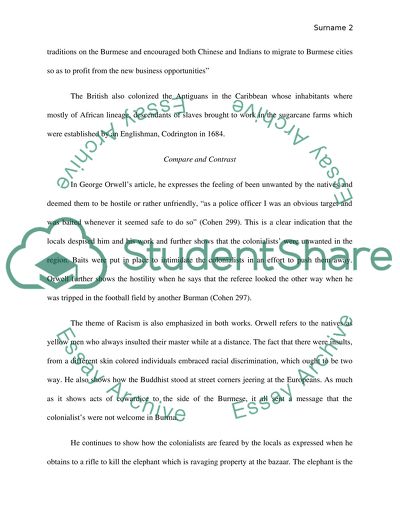Cite this document
(Colonialism as Depicted in The Ugly Tourist and Shooting an Elephant Coursework, n.d.)
Colonialism as Depicted in The Ugly Tourist and Shooting an Elephant Coursework. Retrieved from https://studentshare.org/literature/1666106-compare-and-contrast-the-techniques-used-to-discuss-colonialism-in-jamaica-kincaids-the-ugly-tourist-and-george-orwells-shooting-an-elephant
Colonialism as Depicted in The Ugly Tourist and Shooting an Elephant Coursework. Retrieved from https://studentshare.org/literature/1666106-compare-and-contrast-the-techniques-used-to-discuss-colonialism-in-jamaica-kincaids-the-ugly-tourist-and-george-orwells-shooting-an-elephant
(Colonialism As Depicted in The Ugly Tourist and Shooting an Elephant Coursework)
Colonialism As Depicted in The Ugly Tourist and Shooting an Elephant Coursework. https://studentshare.org/literature/1666106-compare-and-contrast-the-techniques-used-to-discuss-colonialism-in-jamaica-kincaids-the-ugly-tourist-and-george-orwells-shooting-an-elephant.
Colonialism As Depicted in The Ugly Tourist and Shooting an Elephant Coursework. https://studentshare.org/literature/1666106-compare-and-contrast-the-techniques-used-to-discuss-colonialism-in-jamaica-kincaids-the-ugly-tourist-and-george-orwells-shooting-an-elephant.
“Colonialism As Depicted in The Ugly Tourist and Shooting an Elephant Coursework”, n.d. https://studentshare.org/literature/1666106-compare-and-contrast-the-techniques-used-to-discuss-colonialism-in-jamaica-kincaids-the-ugly-tourist-and-george-orwells-shooting-an-elephant.


